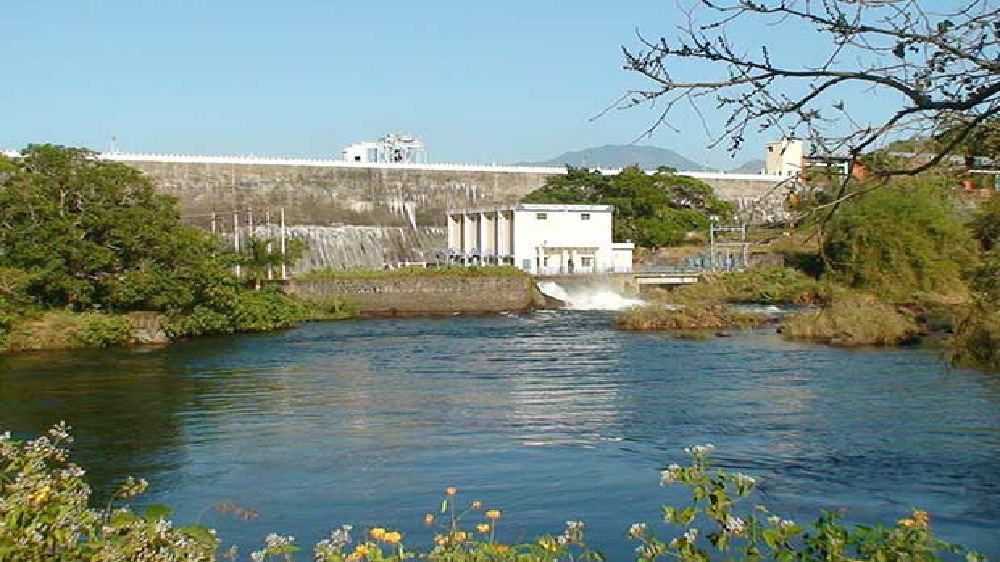'Timeless stories in every drop'
Water Resources Minister Duraimurugan and Secretary of the department Sandeep Saxena, both concur, and add that the book will be useful for all sections of people and appreciated the officials who worked on it for a long time.

CHENNAI: The launch of ‘Achievements of Water Resources Department-2022’ by the Water Resources Department (WRD) is an exhaustive presentation of water bodies present across the State, the people behind the development of water bodies, its history and the present status. This special Independence Day edition was widely appreciated by top bureaucrats of the State including Chief Secretary V Irai Anbu.
“The book is a historical document. It gives hitherto unavailable and undisclosed details about the achievements of officials and the hard work of engineers. The book is a treasure-trove of information and will be a good read for the future generation,” said the Chief Secretary, in a letter of appreciation he wrote.
Water Resources Minister Duraimurugan and Secretary of the department Sandeep Saxena, both concur, and add that the book will be useful for all sections of people and appreciated the officials who worked on it for a long time. One of the officials responsible for the book said that Chief Minister MK Stalin had expressed its appreciation for the officials for the content, design and photos.
Heritage water bodies
The book starts with TN’s contribution during the Independence struggle and people behind the movement. Starting from the 1751 Second Carnatic war between British forces and Arcot Nawab supported by the French forces, it captures the freedom struggle till the Quit India movement, followed by the announcement of Independence by the British.
Then begins the detail explanation on heritage water structures in the state such as Veeranam lake, Kalingarayan Anaicut and the Grand Anaicut, which were recently accorded the status of Heritage Water Bodies by the International Commission on Irrigation & Drainage (ICID).
It also gives references to other water bodies including the Ponneri lake, which the book says was developed by King Rajendra Chola, 1,000 years ago. He brought the Ganga water after winning over the kings in Ganga region and the lake was initially named Chozhangam lake.
Water to Chennai
There are also details about water bodies that Chennai depends on such as Red Hills lake, Cholavaram lake, Chembarambakkam lake, Poondi reservoir, new Veeranam scheme, Kannankottai-Thervoikandigai water reserve, the under-construction Kattur-Thathamanji reservoir and Krishna water scheme.
According to the data provided by the officials of WRD, there are 24 dams and reservoirs, which include dams in Cuddalore, Tiruvallur, Tiruvannamalai, Krishnagiri, Villupuram, Kallakurichi, Dharmapuri, Vellore and Tirupattur districts. Out of the 24, only one – Poondi reservoir – is set exclusively for supplying drinking water for Chennai needs and Kannankottai-Thervoikandigai is used for both drinking water and irrigation.
Supply from Andhra Pradesh
“Under the Krishna water scheme, Andhra Pradesh government is supplying 15 TMC water to Chennai. 4 TMC water is supplied between January and April, 8 TMC between July and October and 3 TMC as compensation for loss due to evaporation and other factors. The scheme was announced in 1983 and Krishna water reached Chennai for the first time in 1996. So far, till January, this year, Chennai has received 101.991 TMC of water under the scheme,” said S Sureshkumar, Joint Chief Engineer (Irrigation).
Speaking in detail about the Kattur-Thathamanji reservoir, in Ponneri Taluk, the WRD says that the works to construct the reservoir was undertaken at the cost of Rs 62.36 crore. Through the reservoir, 58.27-350 million cusecs of water can be stored additionally. The water from the reservoir apart from solving the drinking water problems of the city will also be useful to irrigate 5,804.38 acres of farm lands and will help recharge ground water table. The reservoir will be completed by the end of this year and will be put to public use.
River-linking projects
There are several instances when river linking projects are mentioned and details are extensive. Mahanadi-Godavari-Krishna-Pennar-Palar-Cauvery-Vaigai-Gundar river linking project, Pamba-Achankovil-Vaippar river interlinking project, Cauvery-Agri river-South Vellar-Manimuthar-Vaigai-Gundar river interlinking project and Tamil Nadu’s very own Tamirabarani-Karumeni-Nambiyar river linking project.
Thamirabarani-Karumeni-Nambiar project is the first in the State inaugurated by former Chief Minister M Karunanidhi to provide water to dried areas in Thoothukudi and Tirunelveli districts. Out of the total 13,758 million cusecs of surplus water from Thamirabarani, 2,765 million cusecs from Kannadiyan canal will be diverted, by establishing a flood canal and the Thamirabarani-Karumeni-Nambiar rivers will be interlinked to supply water to Sathankulam and Tisayanvilai.
Of course, inter-State river issues are backed with rare facts and historical nuggets. Mekedatu, Mulla Periyar, Parambikulam-Aliyar, Palar, Neyyar, Shenbagavalli dam and Pennar issues find a special mention.
“After a long struggle of 35 years, water level in Mullaperiyar dam could reach 142 feet in 2014, which was maintained in 2015 and 2018. In 2021, the level was maintained at 142 feet for 18 consecutive days. All necessary technical steps are taken to increase the level to its maximum capacity of 152 feet,” said R Subramanian, chairman of Cauvery Technical Cell-cum-Inter-State Water Wing.
Visit news.dtnext.in to explore our interactive epaper!
Download the DT Next app for more exciting features!
Click here for iOS
Click here for Android



